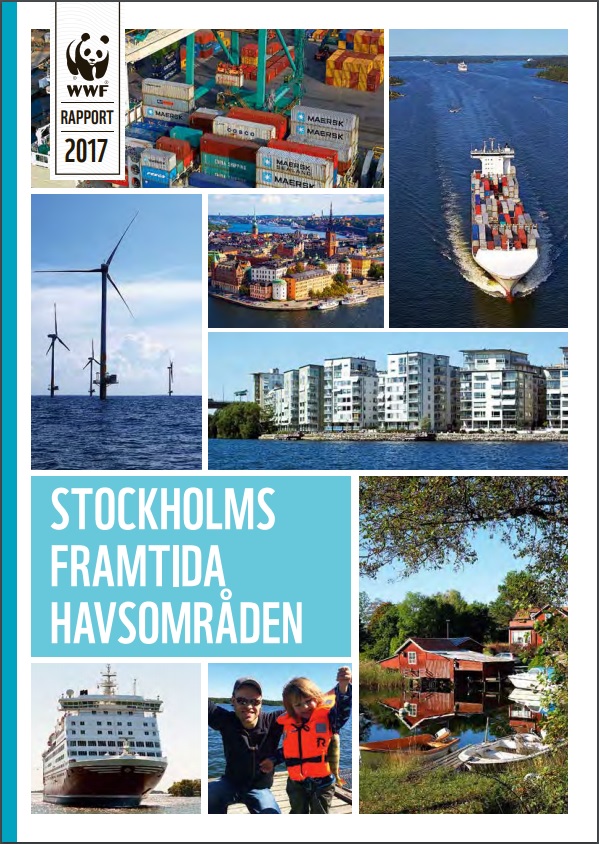AquaBiota has mapped the use of Stockholm’s marine areas in a new report, on behalf of WWF.
The report shows how industries and operations that require space in marine areas affect the marine environment in Stockholm County. The report identifies threats to the marine ecosystem and shows how management and planning can be improved and streamlined to ensure a functioning blue economy and natural marine environments in the future.

Key messages
It is essential with a gentle and well-planned exploitation of the sea within the framework of the ecosystem’s resilience. Urbanization is increasing worldwide and Stockholm is Europe’s fastest growing city. The region’s development places great demands on planning. A major challenge is to meet the growing need for increased maritime and coastal infrastructure, maritime traffic and exploitation while upholding the natural functions and values of the marine ecosystem.
Improved monitoring and planning of maritime traffic is needed. A growing interest in outdoor life and boating along with changing shipping can increase wear on and emissions to the marine environment. Today’s understanding of the effects of shipping and boating is good enough for making the necessary decisions.
Strengthened coastal and marine protection is economically and socially smart. Exploitation of coastal areas is more intensive in Stockholm than in other parts of Sweden, and the proportion of unexploited coasts is constantly decreasing. An increasing population creates combined effects of eutrophication, coastal exploitation in the form of jetties and housing, erosion and emissions from boating and shipping. The combined impact threatens shallow areas that represent an important environment for many species and ecosystem services. Recruitment areas for many fish species have already suffered from historically poor management.
Improved planning of treatment of sewage and wastewater should be made preventively. A changing climate will increase the frequency of heavy, temporary precipitation. Combined with increasing water use on account of a growing population, erosion and nutrient supply to the sea will increase.
With effective maritime planning and active leadership, Stockholm can become a pioneer region for Sweden, Europe and the world. Through a number of EU directives and environmental goals an intensive work to improve the marine environment in Sweden and in Stockholm County are underway. Renewable energy expansion, enhanced nature conservation, new wetlands, and so on create better conditions for the future environment.
Link to report (in Swedish):
Thunell, V. & Fyhr, F. 2017. Stockholms framtida havsområden. Världsnaturfonden WWF.
Article on WWF’s webpage (in Swedish):
Ny WWF-rapport visar: Skärgården för dåligt skyddad – stora värden kan förloras för alltid. 2017-12-13.